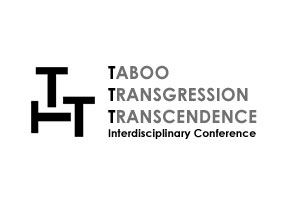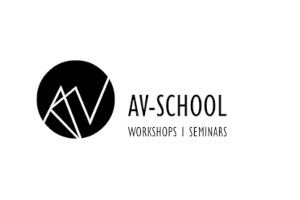This paper explores a live coding audio improvisation performance that examines sound’s spectrality through the lens of hauntology, revisiting archived sound works in real time. By employing live coding techniques and integrating emotionless narration, the performance destabilizes conventional perceptions of time, presence, embodiment, and auditory experience. It operates at the intersection of algorithmic sound synthesis, improvisation, and posthuman philosophy, engaging with Derrida’s concept of hauntology to investigate the temporal disjunction and disembodied presence of sound. Utilizing the open-source software SuperCollider, it enables the deconstruction and resynthesis of recorded materials, transforming past sonic artifacts into new, dynamically evolving compositions.
The ability of recorded sound to be infinitely replicated and recontextualized has profound implications for artistic practice and the posthuman redefinition of presence. This performance disrupts fixed temporal structures, allowing sound works from past installations, films, and performances to resurface as spectral entities. Derrida’s hauntology, suggests that historical remnants do not simply disappear but instead return in displaced, altered forms, existing in a deferred state between presence and absence. Through real-time audio resynthesis, the work embodies this idea, allowing sounds to resurface unpredictably, severed from their original context yet still bearing traces of their past.
From a posthuman perspective, sound acts as a disruptor, redefining the embodied experience by detaching sensory perception from corporeal physicality. In a world where the digital and biological merge, as theorized by industry 4.0 and transhumanist thought, the human body is no longer a singular entity but a multiprojected, omnipresent organism. The performance plays with this notion of fragmented identity, dispersing the presence of the performer through disembodied voices, re-synthesized sonic elements, and algorithmic mutations. The audience encounters sonic revenants, echoes of past soundscapes that exist beyond the control of a singular body.
Live coding as a real-time algorithmic composition method plays a central role, allowing the performance to exist in a state of temporal and bodily indeterminacy. Unlike pre-composed works, live coding generates music on the fly, making each performance unique, ephemeral, and in constant flux. SuperCollider facilitates this by enabling spontaneous manipulation of audio materials, reshaping past recordings into new hybrid sonic environments. The practice of live coding resonates with Victor Turner’s concept of "liminality", where time and identity exist in a state of flux and rupture. Live coding does not adhere to structural time but instead operates in an open-ended mode, anticipating unforeseeable future states. Chun’s perspective on source code as "undead writing"—simultaneously absent and present—further enriches this discussion. The work embraces this dual state of being both live and alive, shifting between readability, writability, and executability. Similarly, in posthuman discourse, the body is no longer a fixed biological entity but a fluid material-informational construct, existing in states of presence and non-presence, much like sound in the performance.
A key feature of the work is its cyclical return of past sounds, akin to revenants—ghostly echoes that never fully disappear. The act of resynthesis allows these archived sound works to be reconstructed, dismantled, and recombined in unpredictable ways, much like Derrida’s interpretation of haunting as an unresolved presence. This recursive reanimation of sound disrupts conventional perceptions of auditory memory, producing a sense of unease, temporal misalignment, and disembodied presence. The posthuman subject, as envisioned by contemporary cybernetic discourse, is a hybrid entity, an amalgamation of data, artificial intelligence, and sensory extension. The performance reflects this by using sound as a non-physical yet intensely present force, dissolving bodily boundaries. Unlike traditional acoustic performances that rely on physical instruments and spatial presence, this work replaces materiality with algorithmic presence, reinforcing the dematerialization of the body in digital performance environments.
The integration of live narration serves as a counterpoint to the abstract, deconstructed sound. Extracted from Bret Easton Ellis’s The Informers, the narration is delivered in a detached, emotionless manner, further enhancing the eerie, unsettling atmosphere. This narrative element grounds the performance amidst the fluid sonic improvisation, offering the audience a focal point within the ephemeral soundscape. Ellis’s writing, known for its emotional detachment and fragmented subjectivities, reflects the posthuman condition, where individuals experience themselves as networked entities rather than singular beings. The audience is drawn into a space where past and present overlap, sound and narrative intertwine, and meaning remains elusive. This disruption of traditional presence mirrors contemporary theories of hyperreality and digital embodiment, in which identity, consciousness, and sensory perception are mediated through technological infrastructures. By dismantling archived sound works and reconstructing them in a new sonic framework, the piece challenges notions of presence, memory, and embodiment. Future iterations could involve multichannel expansion (e.g., 5.1 surround sound), integration of movement and visual elements (dance, video, dramaturgy), and experimentation with AI-generated narrations to further destabilize the concept of an embodied narrator.
Dimitris Batsis is a sound artist and academic researcher. He earned a PhD in Biomusic (the transformation of biological signals into sound art through research in new mediums) from the Department of Fine Arts and Art Sciences at the University of Ioannina, where he also recently completed his Post-Doctoral research. Additionally, he holds an MA in Contemporary Arts and Music from Oxford Brookes University and a BA in Music from Anglia Ruskin University. His research covers the field of biological functions in relation to new media and sciences, as well as sound design and interactive systems. His creative output spans sound installations, performances, and video art, utilizing audiovisual applications and coding. Dimitris has taught music technology and sound design in audiovisual applications at universities in Greece and the UK. He has participated in international festivals (SMC, CTM, ADAF), group exhibitions, and artistic events (London Fashion Week Show, Athens Fashion Week Show, Onassis Stegi). In 2021, the work 'Gather,' to which he contributed the sound design and soundtrack, was selected for the Florence Biennale, where it won first prize in the Video Art category. His articles have been published in scientific journals (Leonardo MIT, Technoetic Telos), conference proceedings (ISEA2023, WAC, DCAC 2021 and 2023), in Greece and abroad, focusing primarily on the subject of sound art.
Magdalini Grigoriadou is a PhD architect (UPM, Spain, 2014) exploring the intersection of space, time, and the human body in architectural imagination. Her research investigates the impact of digital technologies on embodied experiences and the design of personalised and adaptable spaces. Through projects like "Sparágmata" (Mexico, 2017) "Disembody" (Greece, 2021) and "Hybrid Postbodies" (2022) she delves into themes of nostalgia, fragmentation, and the emergence of embodied hybrid digital-physical spaces. By employing virtual environments and performance, she challenges traditional notions of space and architecture, advocating for a more embodied, dynamic, and vibrant approach to spatial experience.
Back





